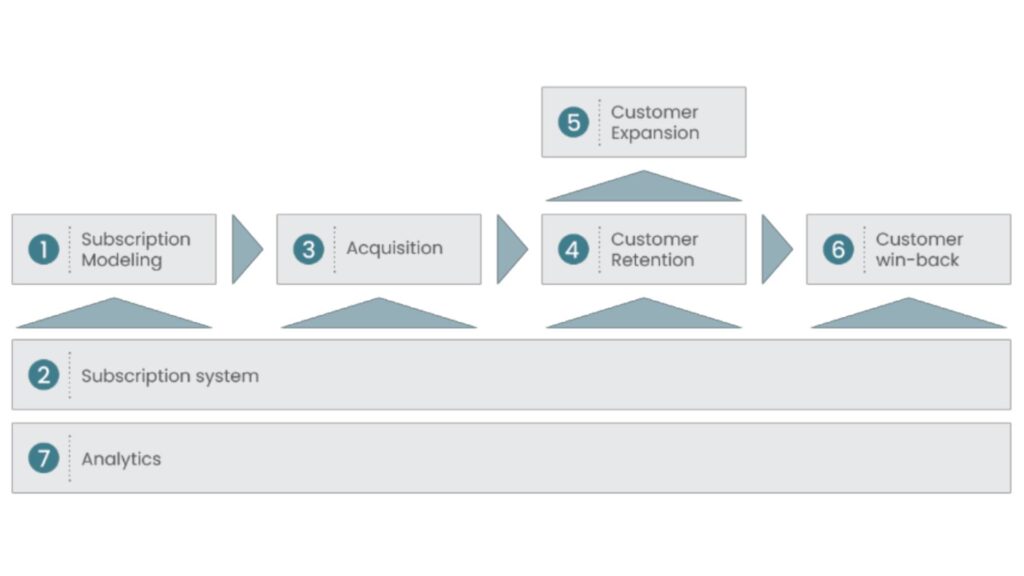Why subscription?
Subscription services have taken the world by storm in recent years, revolutionizing the way we consume products and services. This model has created a global wave of change, impacting both small startups and the largest companies in the world. Tech giant Apple is a prime example: How much of Apple’s revenue comes from subscriptions? In 2023, a remarkable 19% of their impressive revenue came from subscription-based services, amounting to 85 billion USD. And this figure doesn’t even include their revenue from third-party subscriptions sold through the App Store. Amazon’s Prime subscription is another strong example, with revenue of 40.2 billion USD in 2023 and over 230 million paying users. Similarly, music streaming service Spotify has seen great success with an upgrade rate of over 40% from free to paid memberships and revenue of 11.53 billion euros from their Premium subscription in 2023. This clearly shows that consumers’ appetite for subscriptions is growing, and that the subscription model is a powerful business strategy for generating predictable and stable income.
At Subscrybe, we are passionate about subscriptions. Our goal is to provide you with the tools and knowledge on how to become a successful subscription business. In this article, you’ll find valuable insights on various aspects of starting a subscription business, including:
- What is a subscription business model?
- Step-by-step: How to start a subscription business
- The advantages of a subscription business model
- The 9 subscription models defined by Subscrybe
- The Subscription business model
Whether you are an entrepreneur with a new idea or an established company looking to expand your business area, our guide will provide you with the necessary tools and insights to achieve success with your subscription business. If you wish to learn more about how to start a subscription business, you can download our free e-book here.

What is a subscription business model?
The subscription business model involves offering a product or service for a recurring fee, typically monthly or annually, transforming one-time shoppers into loyal, recurring customers. This model emphasizes long-term customer relationships and offers several benefits, including predictable revenue streams, increased customer retention, and enhanced customer lifetime value (CLV).
Unlike the traditional transactional business model, where the focus is on one-time sales, the subscription model prioritizes establishing long-term relationships and generating recurring revenues from customers.
Step-by-step: How to start a subscription business
Begin your subscription business journey by following these 7 steps, based on the Subscription Business Model from “The Subscription Movement and How To Succeed In It”, which you can download here. These guidelines will help establish a solid foundation for your new subscription business.
The Subscription Business Model

1. Subscription Modelling
Subscription modelling is the first stage in creating a new subscription business and refers to what you will offer customers based on these steps:
- Determine whether the subscription model fits your business.
- Value proposition: Development of a compelling value proposition. A compelling value proposition contains both relevant reasons to buy and reasons to stay.
- Pricing: Establish your pricing model and strategy, select pricing tactics, and determine the actual prices.
- Payment: Determine payment methods, as well as billing and dunning procedures.
- Terms: Decide and document the subscription terms.
Consider these questions in the subscription modelling phase:
- What are the potential advantages and disadvantages of adopting a subscription-based approach for my product or service?
- What unique value can my subscription provide to customers that distinguishes it from other offerings?
- What are the reasons for customers to sign up?
2. Subscription System
In the subscription system stage you have to choose the right systems to support your subscription business based on these steps:
- Management system: Choose the right subscription management system to manage products, customers, and billing.
- Platform: Create a self-service platform allowing customers to manage their subscription through a profile site, as well as facilitating ordering and payment of your product or service .
- Marketing: Deciding on a marketing strategy and communication tools.
- Interfaces: Integration between the subscription management and other systems.
Consider these questions in the subscription system phase:
- What features do you need in a subscription management system?
- How user-friendly is the platform?
- What features should the profile site include?
3. Customer Acquisition
The customer acquisition stage focuses on how to sell subscriptions to prospective customers following these steps:
- Strategy: Establish a customer acquisition strategy.
- Campaign plan: Build a campaign plan to determine which channels will give you how many customers at what costs.
- Sales process: Implementing sales channels outlined in strategy and campaign plan.
- Personalization: Personalize the sign-up flow.
Consider these questions in the customer acquisition phase:
- Which acquisition channels will be most effective in reaching my target audience?
- How much will it cost to acquire customers through each channel?
- Which sales channels align with my strategy and campaign plan?

4. Customer Retention
The most important issue for subscription business is customer retention. In this stage you should follow these steps to maximise customer retention:
- Onboarding: Building an onboarding strategy and welcome flow for new customers. You should focus on reducing friction, provide instant gratification, and reward desired behavior.
- Customer journey: Defining a customer loyalty strategy and customize the customer journey by utilizing loyalty drivers.
- Customer service: Defining your customer service strategy both online and offline is important for driving loyalty.
- Communication: Create your customer dialogue programme and processes to engage customers by constantly communicating with them.
- Churn prevention: Implement tools for persuading customers to stay, when they consider leaving your subscription.
Consider these questions in the customer retention phase:
- What processes can you put in place to ensure timely and relevant communication with subscribers throughout their subscription lifecycle?
- How do you create and reward loyal customers?
- How can you personalize and customize the onboarding flow and customer journey to encourage long-lasting relationships?
- How do you prevent churn from your subscribers?
5. Customer Expansion
Customer expansion is about increasing your income from existing customers following these steps:
- Upselling: implement a strategy for upselling on your current product line.
- Cross-selling: implement a strategy for introducing customers to new products or services.
Consider these questions in the customer expansion phase:
- How can you increase your income from existing customers?
- How can we position upselling and cross-selling as adding value to the subscriber’s experience rather than simply increasing their spending?

6. Customer Win-Back
Customers who leave you may not be lost forever. Maybe they have been persuaded to try one of your competitors or perhaps they have no need for your product or service at the moment. Follow these steps to build a great win-back strategy:
- Win-back: segment lost customers on attractiveness to regain and create a strategy to win back lost customers.
Consider these questions in the customer win-back phase:
- Why did the customers end their subscription?
- What does the customer miss out on when discontinuing the subscription?
- How can you make it attractive for the customers to restart the subscription?
7. Analytics
Analytics should be an ongoing process occurring throughout every stage of the subscription model following these steps:
- KPI’s: Determine key performance indicators.
- Data tracking and analysis: Implement a procedure to track and analyze data on all subscription performance indicators. Collect data for personalization in all phases and develop processes to use this data to improve your performance.
Consider these questions in the analytics phase:
- How do you best measure the success of your subscription business?
- What tools and technologies can you use to track and analyze data on subscription performance indicators effectively?
- How can you leverage subscriber data collected across all phases of the subscription lifecycle to personalize and customize the subscriber experience?

If you wish to learn more about how to start a subscription business, download our free e-book here.
The advantages of a subscription business model
- Predictable revenue: The subscription business model provides a steady stream of recurring revenue, allowing for better financial planning and stability compared to one-time sales.
- Increased purchasing frequency: Subscribers tend to spend more money with your brand as they do not have to make an active decision each time they need the product. You could say that subscribers have “taken themselves off the market”.
- Customer loyalty: Subscribers often develop long-term relationships with the brand, leading to higher customer retention rates and reduced churn compared to transactional businesses.
- Increased customer lifetime value (CLV): With recurring revenue from subscribers, the overall lifetime value of customers tends to be higher, as they continue to generate revenue over an extended period.
- Customer data and knowledge: Subscriptions generate valuable data on customer behavior, preferences, and usage patterns, which can be used to optimize marketing strategies, personalize offerings, and enhance the customer experience.
The 9 subscription models defined by Subscrybe:
- Green Fee Subscriptions
- Consumption Subscriptions
- Surprise Box Subscriptions
- Content Website Subscriptions
- All-You-Can-Eat Subscriptions
- Simplifier Subscriptions
- Network Subscriptions
- Peace of Mind Subscriptions
- Tailormade Subscriptions
Check out our Subscription Handbook for more in-depth definitions of these subscription models and much more.

